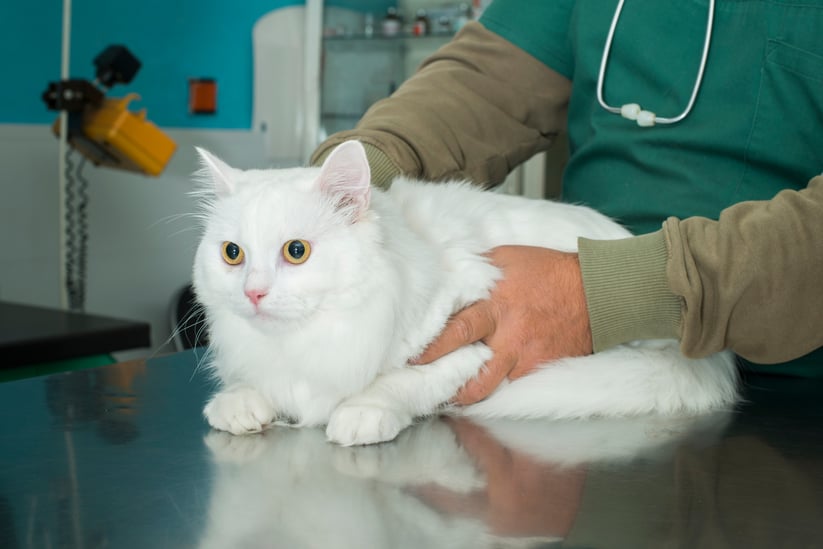Urethral obstruction is a life threatening emergency in cats. It is mostly seen in young to middle-aged obese male neutered cats, but any cat can be affected. It is important to know and recognize symptoms of this disease. Male cats that have cystitis (Feline Lower Urinary Tract Disease or Feline Urologic Syndrome) are at a greater risk for obstruction.
Symptoms: Owners may report some of the following symptoms. These symptoms are not always present, or if a cat has been hiding and is ill from this problem, the owner may not recognize the signs. If an owner calls and describes any of the following symptoms, you should recommend the cat be seen by a veterinarian immediately.
- Vocalizing in the litterbox or frequent trips to the litterbox
- Straining to urinate (often mistaken as constipation)
- Blood in the urine
- Posturing to urinate and no urine is coming out
- Licking at the genital area excessively
- Extreme weakness or lethargy, agitation
Causes: The cause of Feline Lower Urinary Tract Disease is largely unknown. It is thought to be triggered by stress, and in many cats diet may play a role. Underlying infection is rare. Sometimes struvite crystals may be seen. These crystals, along with mucus or other debris may form a urethral plug and can obstruct the urethra.
The Emergency: If a cat can't urinate, it can't excrete potassium. Potassium builds up in the peripheral blood and can lead to a life threatening hyperkalemia and can ultimately cause the heart to stop. The bladder may feel like a hard lemon on palpation of the abdomen.
Treatment: The obstruction must be immediately relieved by placing a sterile urinary catheter. Sometimes a cystocentesis is performed for immediate relief or if there is initial difficulty placing the urinary catheter. The bladder is drained completely and a urinary bag is attached after the urinary catheter is secured. These patients are treated with IV fluid diuresis (fluid of choice is 0.9% NaCl). Pain medication (buprenorphine) is needed to control the discomfort in these cats.
Labwork: Other than hyperkalemia (increased potassium), often the BUN and creatinine (the kidney values) are elevated. This is a "post-renal" azotemia. After the hydration status is corrected and the obstruction is relieved, these values often normalize. Follow up labwork is necessary to make sure the renal values return to a normal level. Sometimes medications (such as phenoxybenzamine) are sent home initially to help ease urination and to relieve urethral spasm after the urinary catheter is pulled.
Other considerations: Radiographs may be helpful to make sure that there is not a stone in the bladder or urethra. Also, even though a concurrent urinary tract infection is rare, it is best to culture the urine to rule it out.
Most cats have the urinary catheter in place for 48 hours or more. The catheter is then pulled and the cat is monitored closely to make sure it can urinate on its own before going home. A urinary diet is often recommended to help prevent the formation of struvite crystals and to help maintain a balanced urine pH.
Recurrence: Cats usually do well with the dietary change and trying to minimize stress in the home. Recommend 1 litterbox per cat plus 1 extra. Feliway spray or plug-ins can be helpful to reduce stress. A perineal urethrostomy surgery should be considered for cats that have recurrent episodes of obstruction.
Feline Urethral Obstruction


